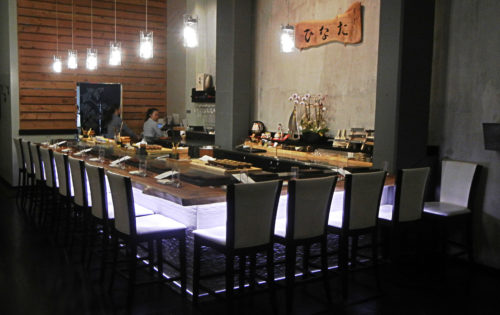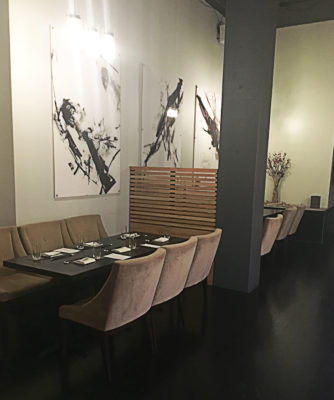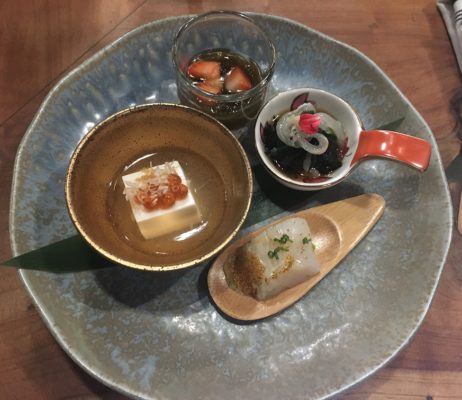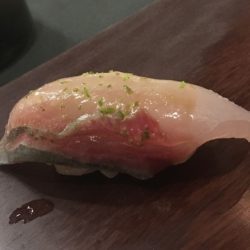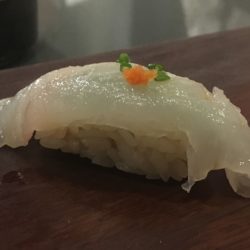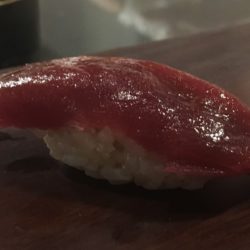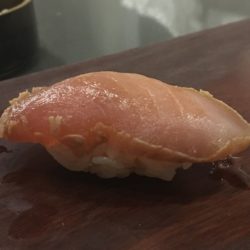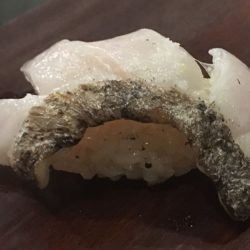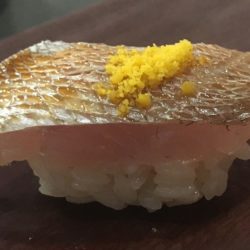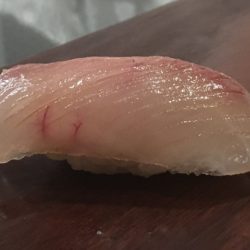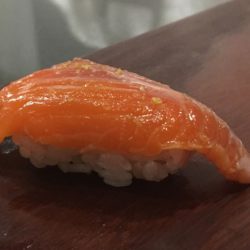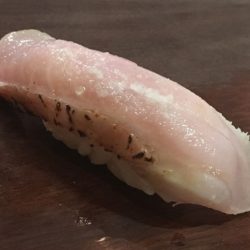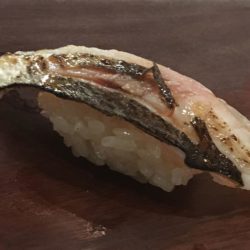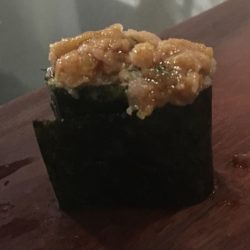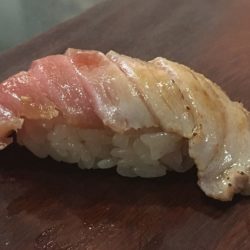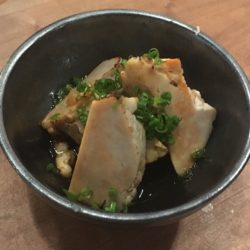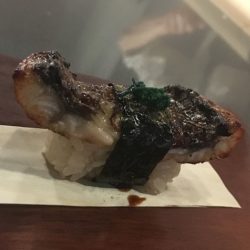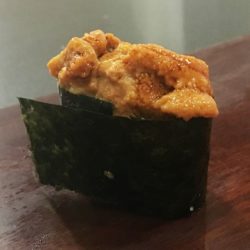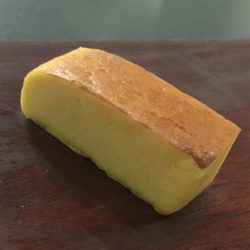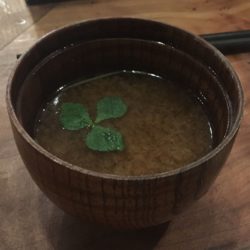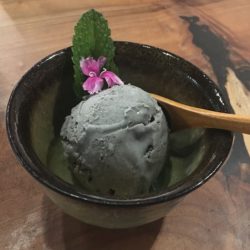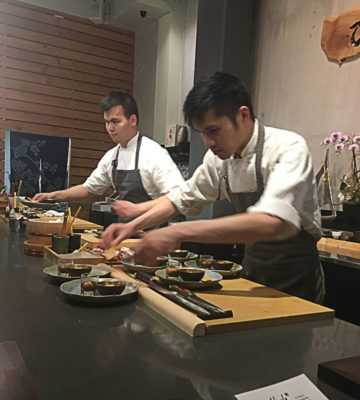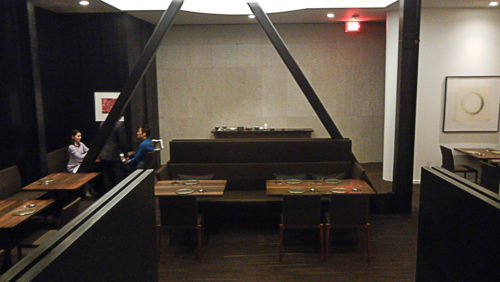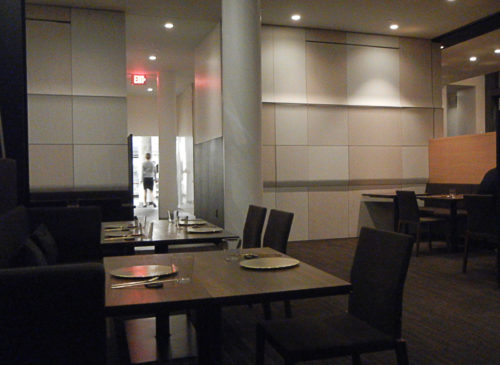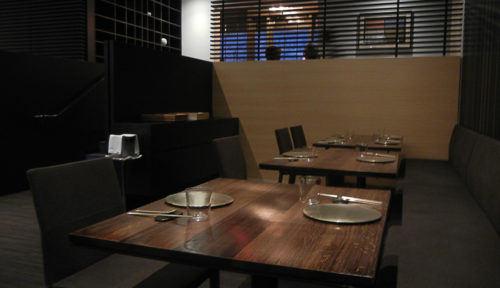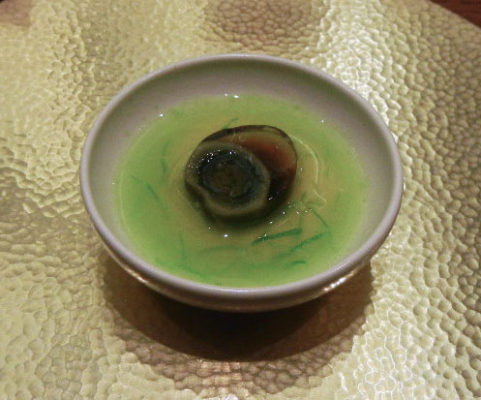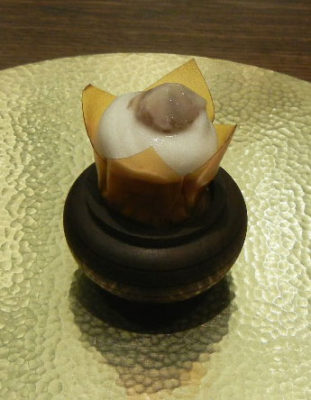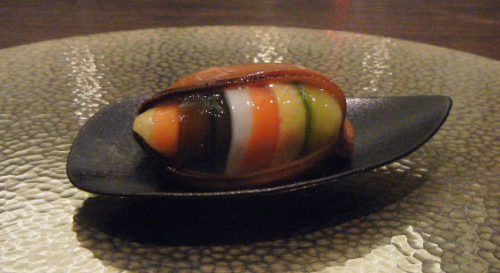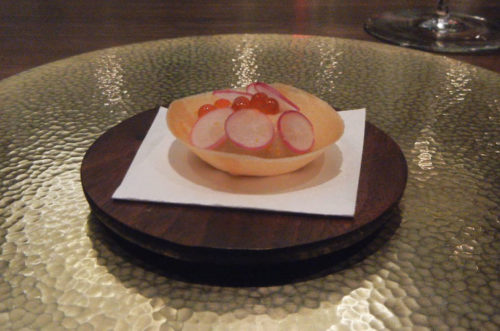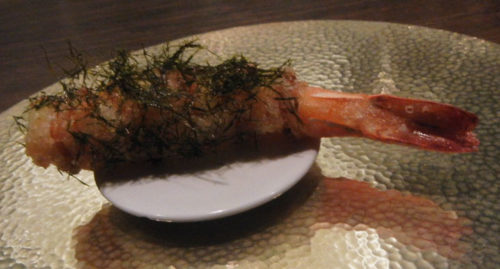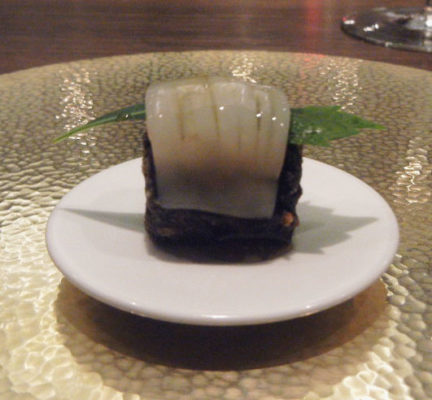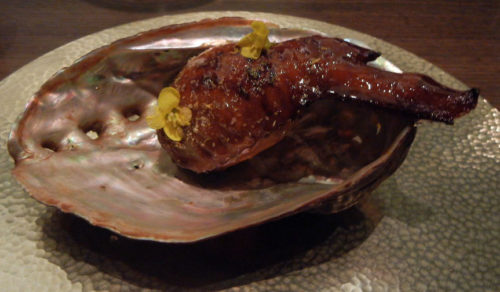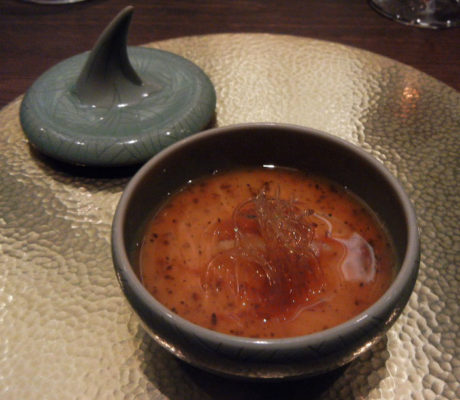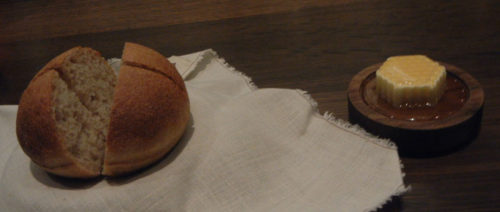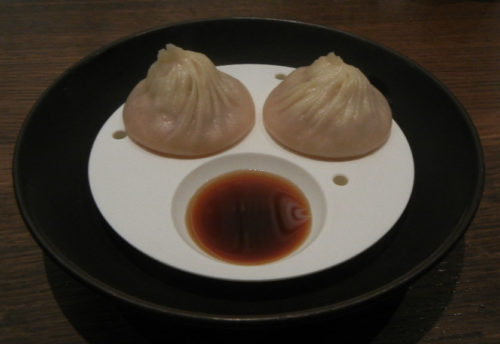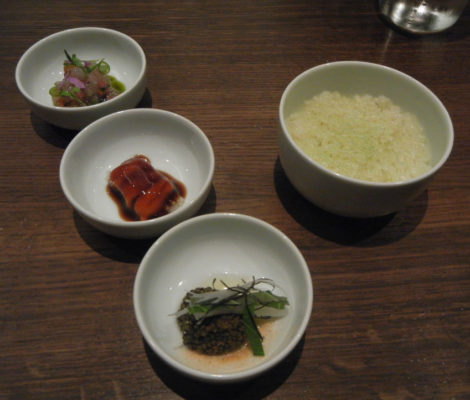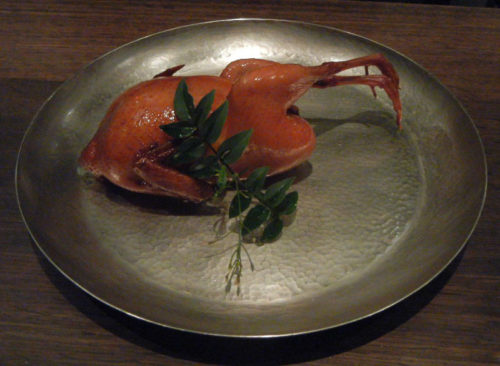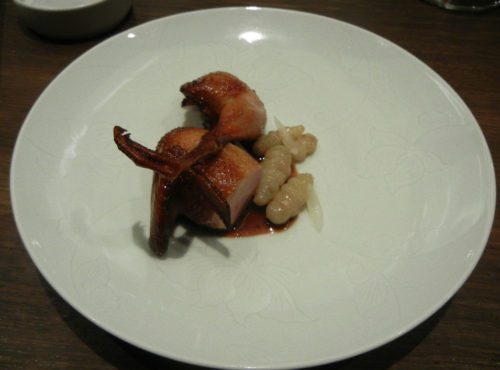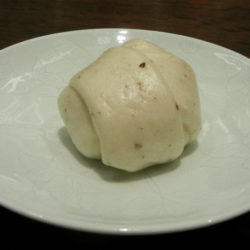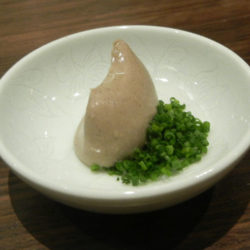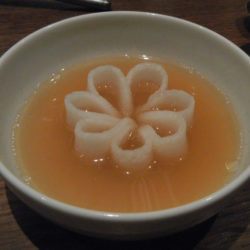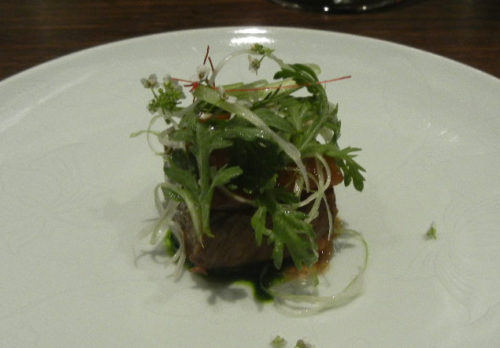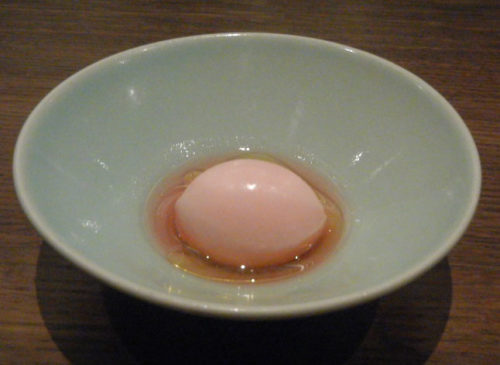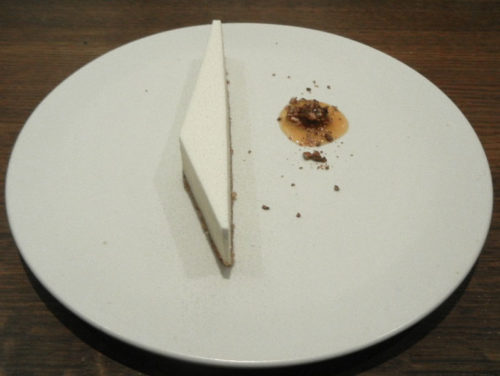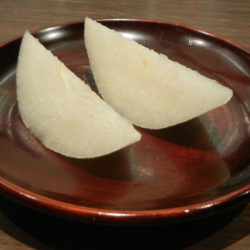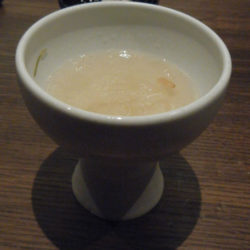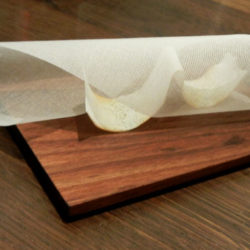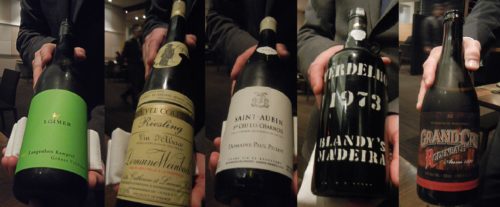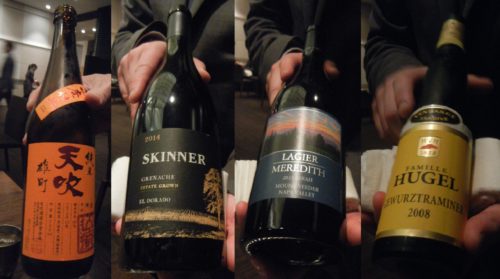Hinata
810 Van Ness Ave.
San Francisco, CA 94109
(415) 829-8291
Website
Looking at the tasting menu restaurants in San Francisco, I find it to be expensive and even pricier than New York once tax and tip are added. I wanted a pocket-friendly multi-course dinner. I did a quick search on the web ended up with Hinata, a sushi restaurant that only offers omakase for the fairly decent price of $78.
Hinata was founded by a pair of sushi chefs who cut their skills at San Francisco’s local sushiyas, in the rapidly gentrifying neighborhood of The Tenderloin. The restaurant has a spacious layout with high ceilings and modestly designed interior. Guest can choose to dine at the twelve seats sushi counter or at one of their two top tables. There are only two seating available nightly and reservation are made through YELP. Adhering to the Japanese way of dining and punctuality, every guest are seated and served at the same time
The omakase began with four appetizer served simultaneously. Hokkaido tofu with ginger, wasabi and salmon roe; tofu from Hokkaido are some of the finest and its high quality is apparent in this dish. The texture is firm while also possessing a certain tenderness. Ice fish with wakame and cucumber has an interesting taste that is similar to crustacean, and Vinegar cured fresh Okinawa seaweed has a blend of sourness with a deep ocean element. The Seared Hokkaido scallop with miso aioli was a spoon of delicious luscious scallop flavored with miso aioli.
On to the nigiri’s, the first to arrive was the Kanpachi- amber jack, which has a nice buttery sweetness to it. Hirami-flounder has a mildness that was in perfect tune with the citric acidity from the yuzu. Next, the Hon Maguro-blue fin tuna was filled of delicious fattiness. In contrast, the Bincho-albacore tuna has leaner taste and texture. Tachiuo-belt fish was blow torched, slightly changing its quality as well as providing wonderful chard skin.
The Kasugodai-baby red snapper was tender and comes with a noticeable aroma of the sea. The Shima Aji-striped jack has very good clean subtle taste and the Umi masu-ocean trout features an oily content with a mild saltiness. Kinmedai-cherry wood smoked golden eye snapper was brilliantly infused with fruity smokiness.
Continuing on with Kamasu-Japanese barracuda, an inexpensive fish that is never used in any sushiyas in Japan. The barracuda was lightly seared, hardening the top layer while giving it a nice flavor. Negitoro-fatty blue fin tuna with pickled daikon is a delectable scraped tuna meat mixed with pickled daikon and wrapped in sea weed. That was followed by an excellent Chu toro- medium fatty blue fin tuna, which also marks the end of the sushi part of the omakase. I added a few more items such as the decadent O-toro-blue fin tuna underbelly which was extremely flavorful. The Ankimo-monk fish liver were thick cuts of creamy and velvety monk fish liver. The Shiriyaki-fresh water eel has a good bright sweet graininess, and the Uni-Maine sea urchin was fresh and buttery.
Tamago-organic egg custard with shrimp was delicate and has a profound shrimp taste and the Owan- Fish broth with red miso, nameko and mitsuba has sharp fish flavors mixed in with a distinct earthiness. Then, finally dessert; Black sesame ice cream. This ice cream is nutty with hints of bitterness, and not as sweet as I thought it would be which I actually enjoy.
In this omakase, the ingredients were seasonal and quality. Most of the fish and seafood are shipped directly from Tokyo’s famed Tsukiji Market while also utilizing local products. The sushi rice was nicely compacted together, and contain a wonderful amount of vinegar. Both rice and fish were able to perfectly come together.
Prior to starting the omakase, Chef Gavin Leung (the other half of the duo that opened Hinata) who was in-charged of my side of the counter introduced himself. He was engaging throughout the evening, and promoted communal vibe amongst guest. The service was nothing to complain about, the staff were great and gracious.
I was surprised at the price I paid at this restaurant. For $78 their omakase was a bargain considering the type of quality ingredients that were used, and the craftsmanship that it takes to prepare this type of a meal. Hinata is a place to indulge without putting a deep hole in the pocket.

